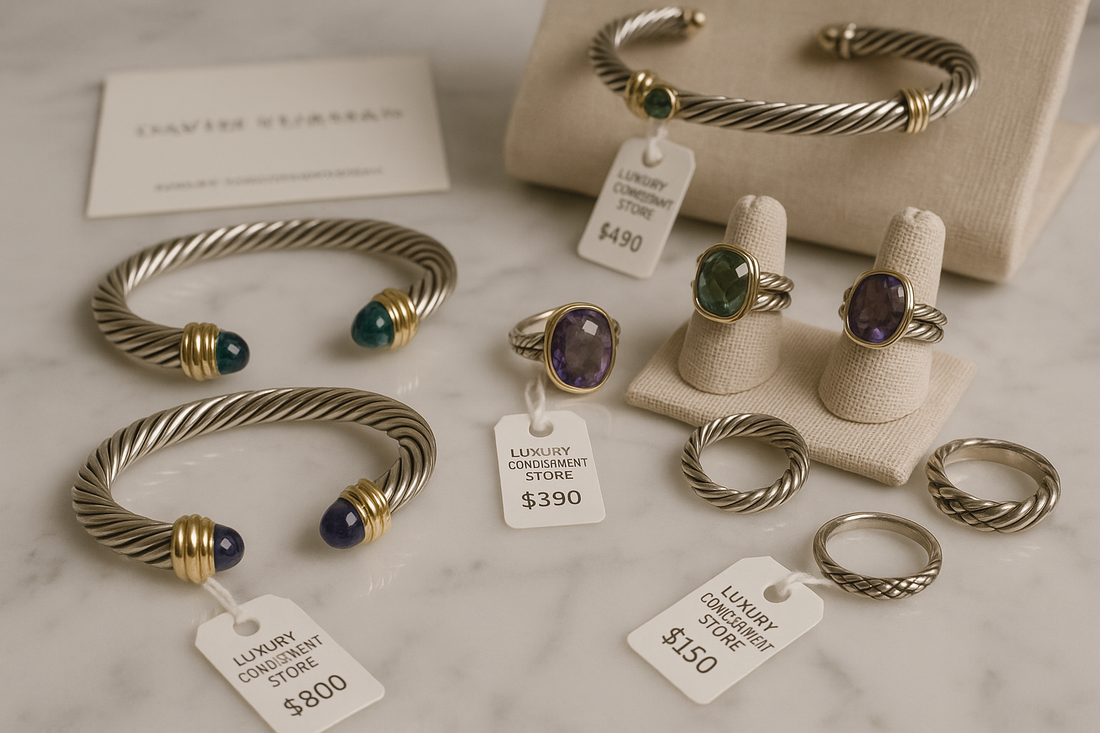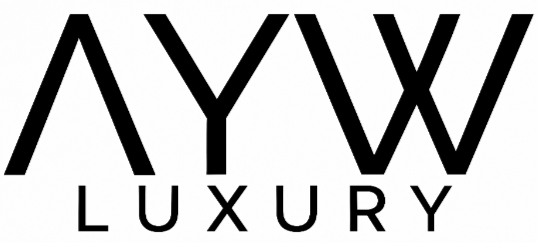
How Jewelry Consignment Works: Seller’s Complete Guide
How Consignment Jewelry Works – What Sellers Should Know
Selling fine jewelry can feel overwhelming. Many jewelry owners ask themselves: Should I sell directly? Should I trade in? Or is consignment jewelry the smarter option? If you’ve ever wondered how jewelry consignment works, what to expect when consigning jewelry, and how to maximize your profit as a seller, this guide breaks it all down.
In this in-depth article, we’ll cover:
- What consignment jewelry is and how the process works
- Why consigning fine jewelry may be better than selling outright
- What sellers should know before consigning jewelry
- Pros and cons of consignment jewelry vs. resale or auction
- Tips to get the best value from consignment jewelry sales
Whether you’re thinking about consigning David Yurman jewelry, vintage Cartier pieces, or designer diamond bracelets, understanding the consignment process is key to making an informed choice.
What Is Consignment Jewelry?
Consignment jewelry is when you, the seller, place your jewelry with a retailer, jeweler, or online marketplace to sell on your behalf. Unlike selling outright, you don’t receive payment immediately. Instead, your jewelry is listed for sale, and once it sells, you receive a percentage of the final sale price.
Think of consignment jewelry as a partnership. You provide the jewelry, and the consignment shop or online retailer provides exposure, marketing, authentication, and customer reach.
How Does the Consignment Jewelry Process Work?
The process of consigning fine jewelry usually follows these steps:
- Evaluation & Authentication – The retailer or jeweler examines your piece to confirm authenticity, quality, brand, and condition. Luxury jewelry consignment often requires certificates, appraisals, or hallmark verification.
- Agreement & Pricing – You’ll sign a consignment agreement outlining the consignment period (often 60–180 days), listing price, and your percentage of the sale. Some platforms allow you to suggest a price, while others will recommend pricing based on market demand.
- Listing & Marketing – The retailer photographs your jewelry, writes descriptions, and markets it to their audience. On luxury consignment sites, this may include professional photography, SEO-rich listings, and targeted email campaigns.
- Sale & Payment – Once the jewelry sells, the retailer deducts their commission (commonly 20–40%) and pays you the remainder. Payments are typically issued monthly.
- Unsold Items – If the jewelry doesn’t sell during the agreed timeframe, you can choose to lower the price, extend the contract, or request the item back.
Why Choose Jewelry Consignment Over Direct Selling?
For many sellers, the biggest draw of consignment jewelry is higher profit potential. When you sell directly to a pawn shop, local jeweler, or gold buyer, they must resell your piece at a markup, meaning you receive less upfront.
With consignment, you keep ownership until it sells and capture more of the resale value. For high-demand brands like David Yurman, Cartier, Tiffany & Co., or Van Cleef & Arpels, consignment often yields significantly better returns.
What Sellers Should Know Before Consigning Jewelry
Before you hand over your jewelry for consignment, it’s important to understand these key points:
1. Consignment Is Not Immediate Cash
Unlike selling to a gold buyer or online reseller, you won’t be paid right away. Jewelry consignment requires patience while your item finds the right buyer.
2. Commission Percentages Vary
Most consignment shops charge between 20% and 40%. Luxury jewelry consignment platforms with global reach may charge more, but they often provide stronger marketing and a higher likelihood of a sale.
3. Condition Matters
Polished, professionally cleaned, and authenticated jewelry sells faster and for more. Many jewelers will recommend reconditioning or authentication reports to build buyer confidence.
4. Know the Market Value
Research what similar pieces are selling for online. For example, “David Yurman Albion ring resale price” or “Cartier Love bracelet pre-owned value.” Having a baseline helps you negotiate better listing terms.
5. Check the Contract Carefully
Review the consignment agreement to confirm:
- Consignment period (how long your item will be listed)
- Commission percentage
- What happens if your jewelry doesn’t sell
- How and when payments are issued
Pros and Cons of Jewelry Consignment
Like any selling method, jewelry consignment has advantages and drawbacks.
Pros:
- Higher returns than pawn shops or direct resale
- Professional marketing & exposure to serious buyers
- Authentication & trust – buyers feel confident with certified sellers
- Hassle-free – the retailer handles photography, listings, and sales process
Cons:
- No instant payment – it may take weeks or months to sell
- Commission fees reduce your total earnings
- No guarantee of sale – your jewelry may not sell within the consignment period
Consignment Jewelry vs. Selling Outright
If you need fast cash, direct selling may be better. But if you want to maximize your jewelry’s resale value, consignment is usually the stronger choice.
For example:
- Sell to jeweler directly – Quick, but expect only 30–50% of resale value
- Auction house – Good for rare, antique, or estate jewelry, but auction fees are high
- Online resale platforms – Faster than consignment, but less controlled pricing
- Consignment jewelry – Best balance of profit and professional selling support
How to Maximize Your Consignment Jewelry Sale
Want to get the most money possible for your consigned jewelry? Here are proven tips:
- Work with a trusted consignment jeweler – Choose retailers with strong reputations and transparent agreements.
- Request authentication reports – Certified pre-owned jewelry with a valuation report sells faster.
- Invest in presentation – Professional photos and detailed descriptions attract buyers.
- Price strategically – Don’t list too high; competitive pricing encourages faster sales.
- Promote your own listing – Share the consignment page link on social media to reach more potential buyers.
Final Thoughts – Is Consignment Jewelry Right for You?
If you own fine jewelry that you don’t wear, consigning may be the smartest way to unlock its value. Unlike quick cash sales, consignment requires patience, but the payoff is higher profit and professional selling support.
Sellers should understand the basics: how consignment works, what commission rates to expect, how to prepare jewelry for sale, and how to choose the right consignment jeweler. By doing your research and selecting a trusted partner, you can confidently consign your jewelry and earn a fair return.
At AYW Luxury, we specialize in certified pre-owned David Yurman jewelry and other designer pieces. Every item includes authentication and valuation, giving buyers peace of mind and sellers stronger results. If you’re considering consigning fine jewelry, our team is here to help guide you every step of the way.
